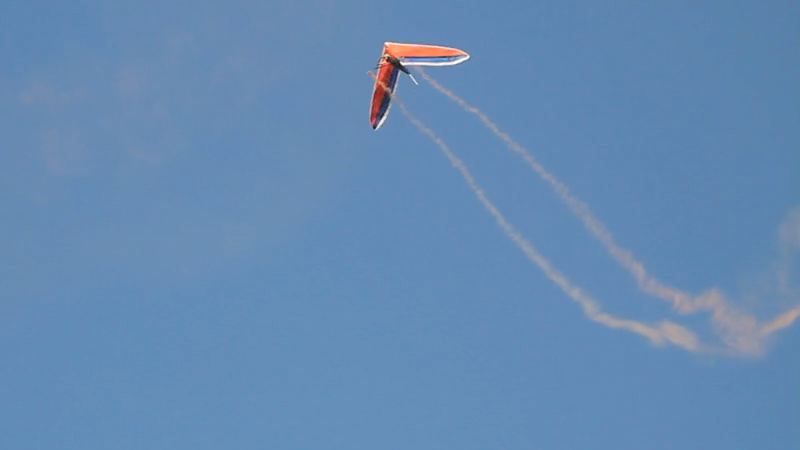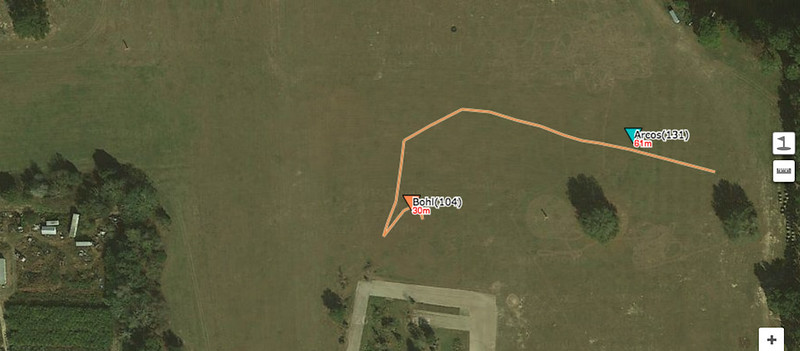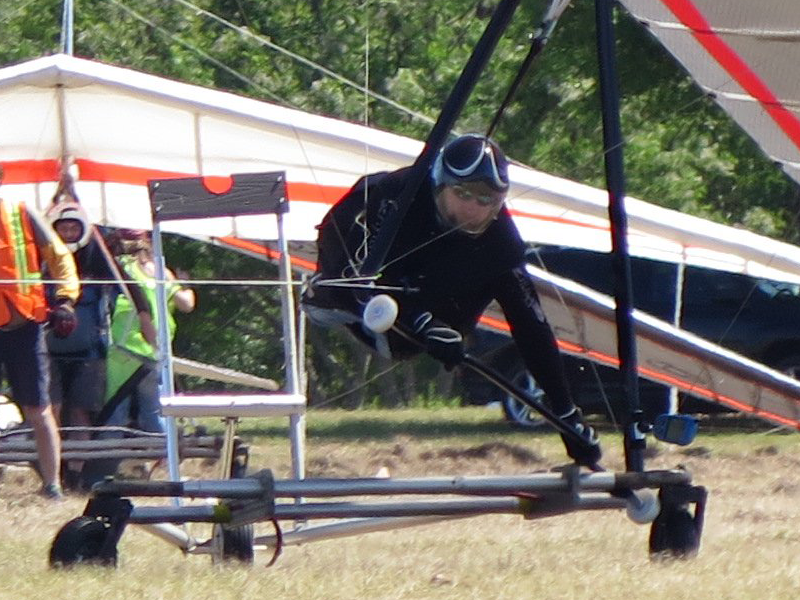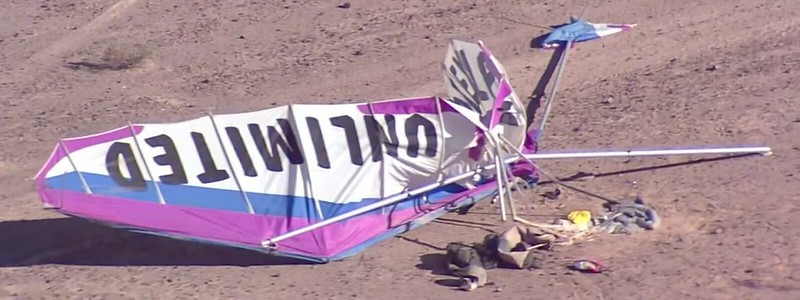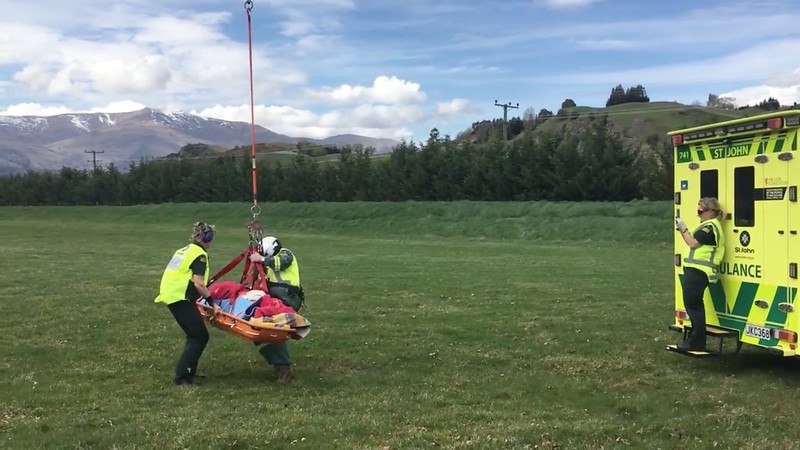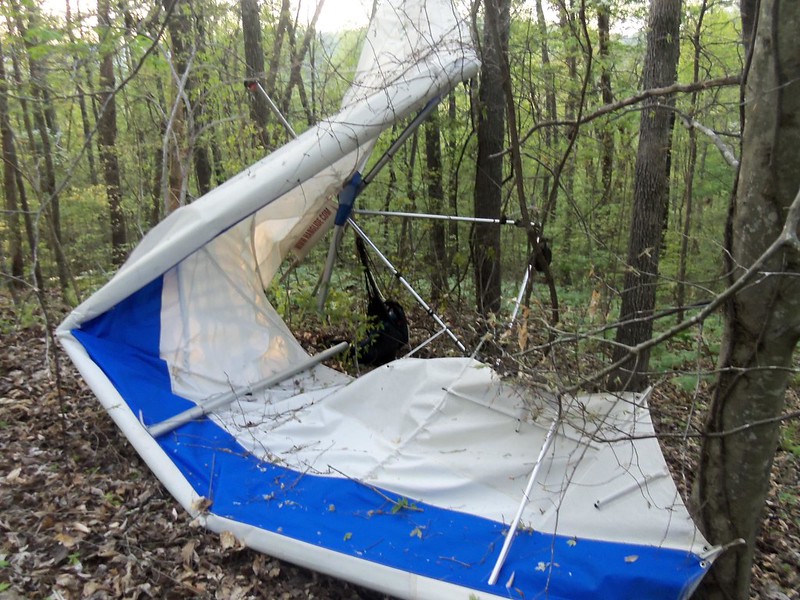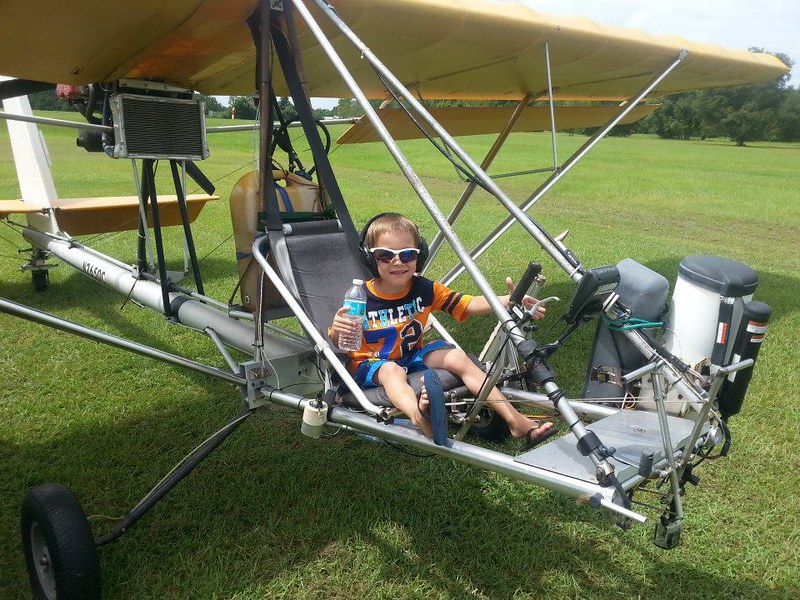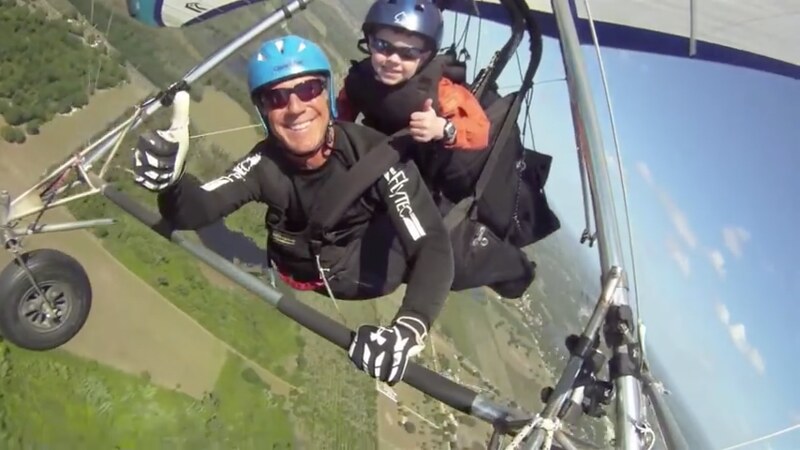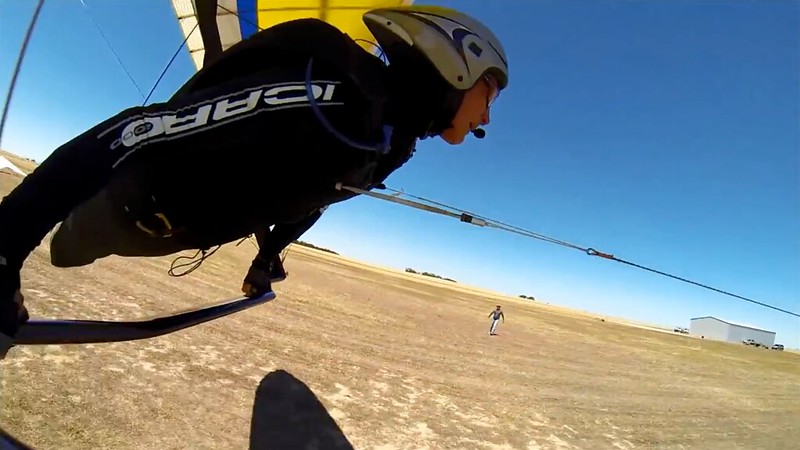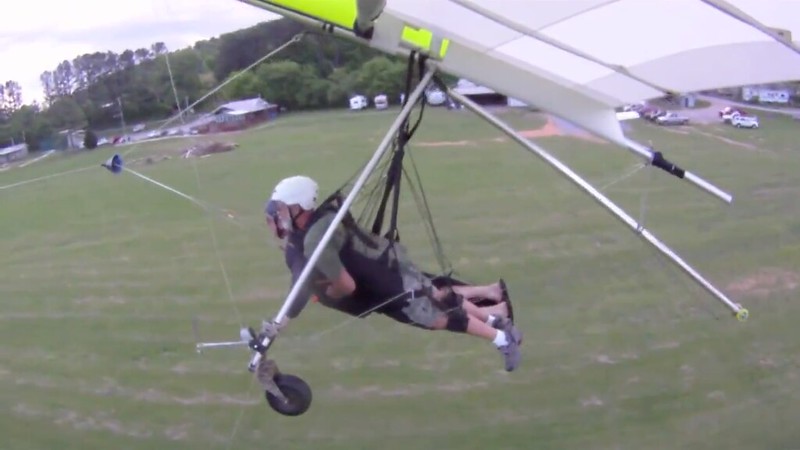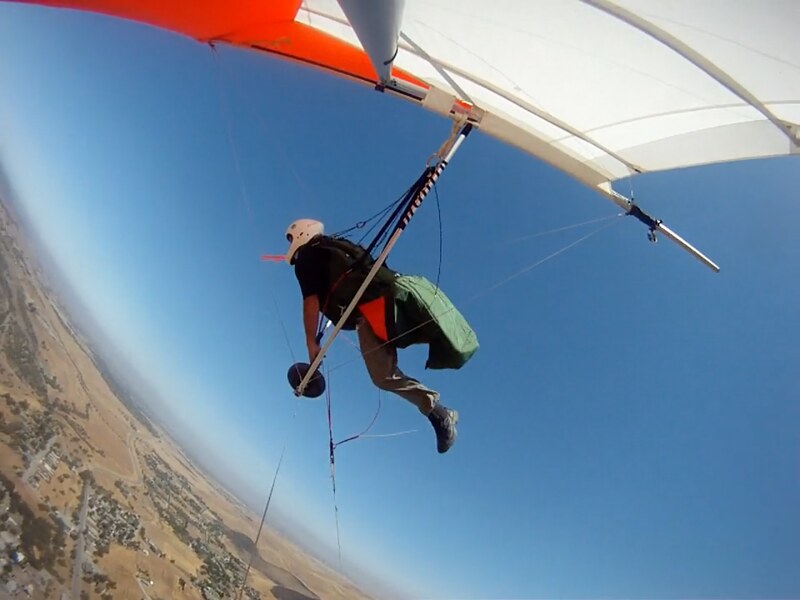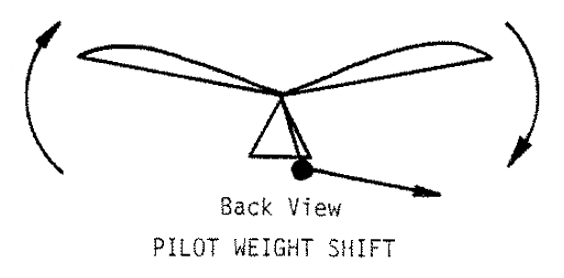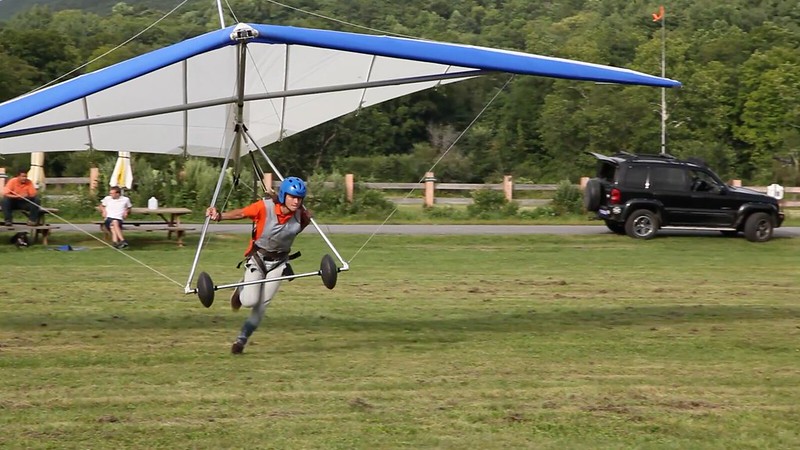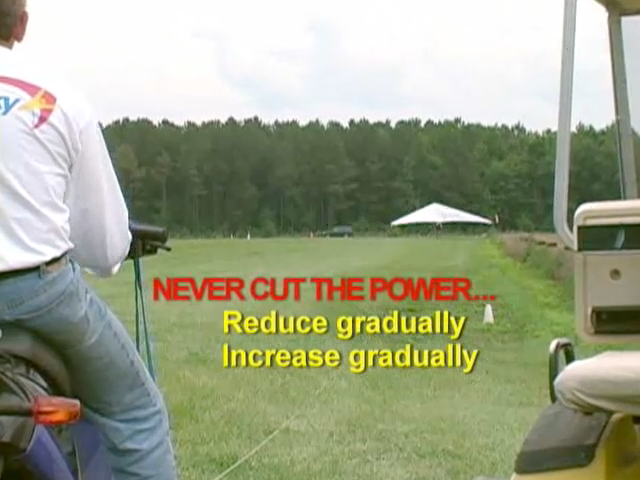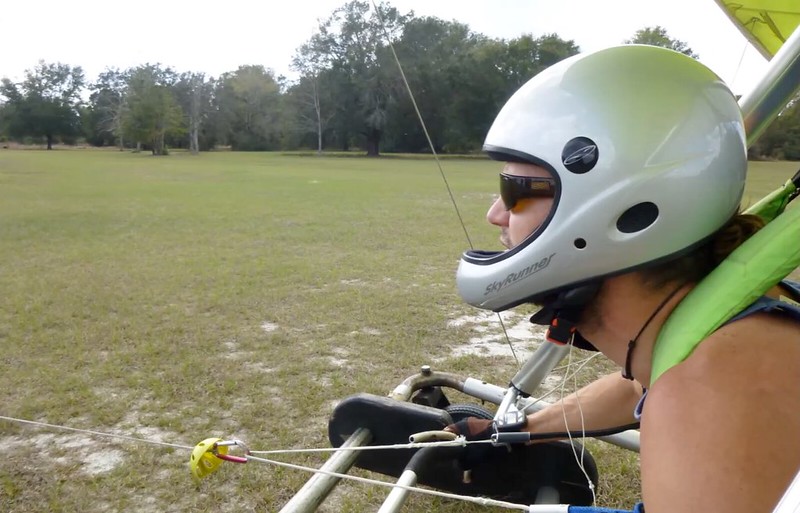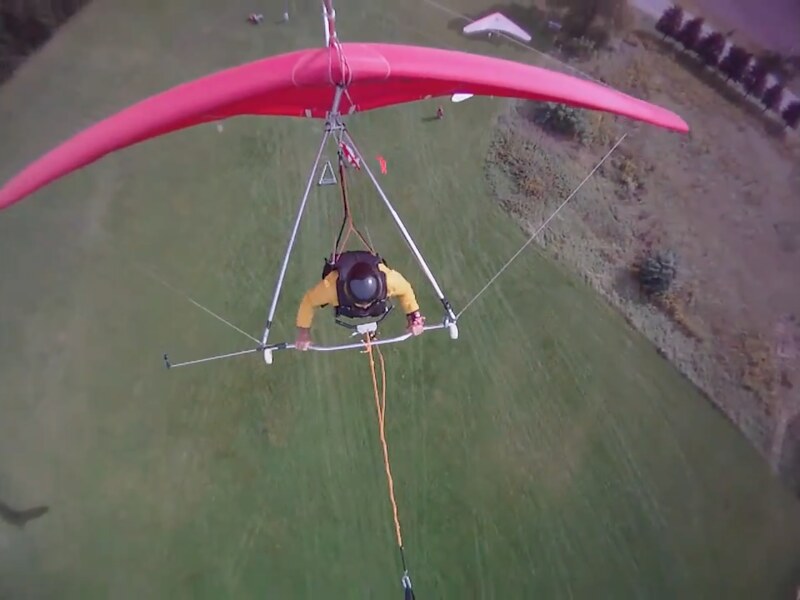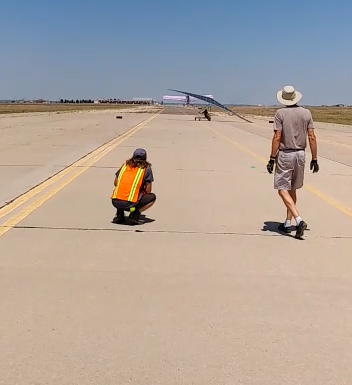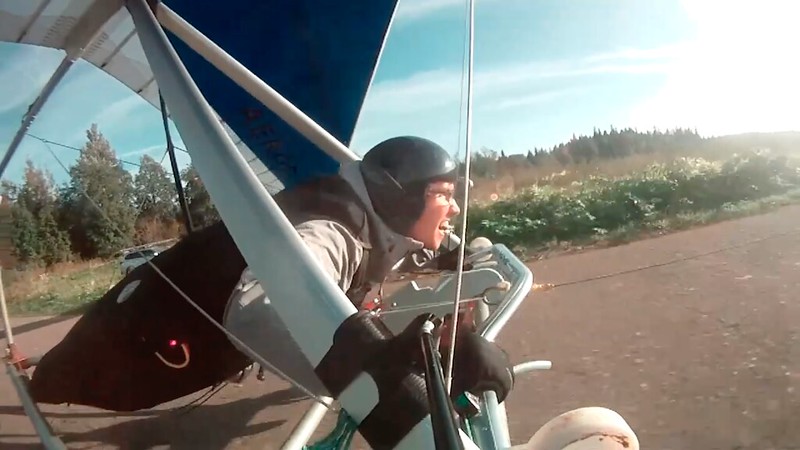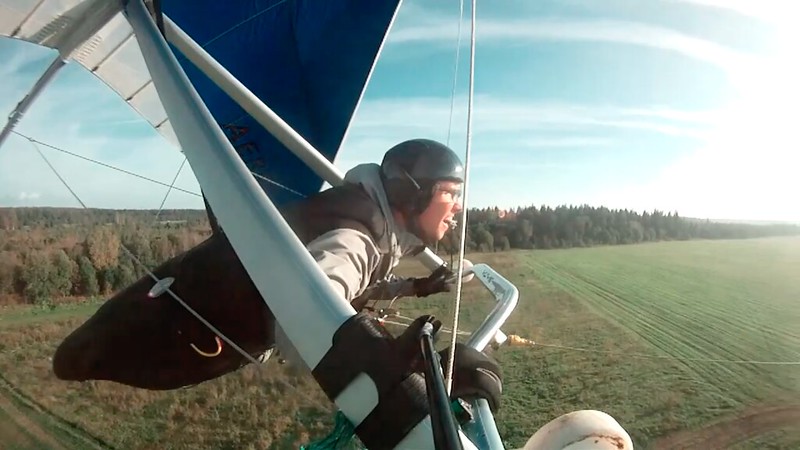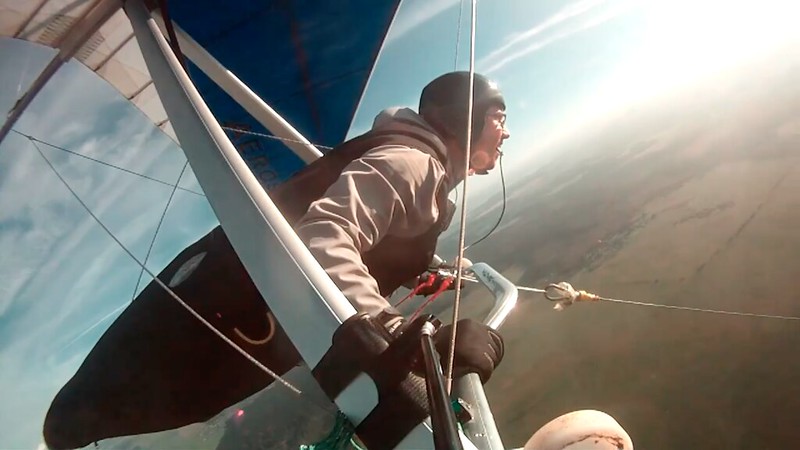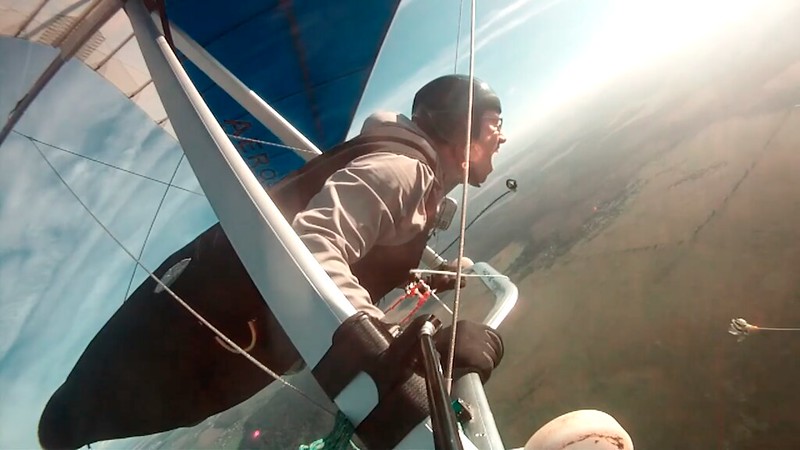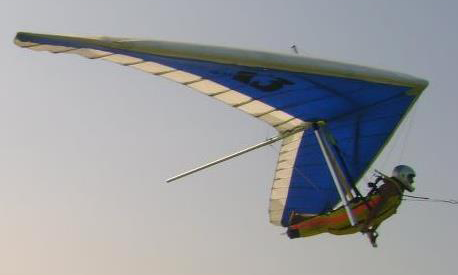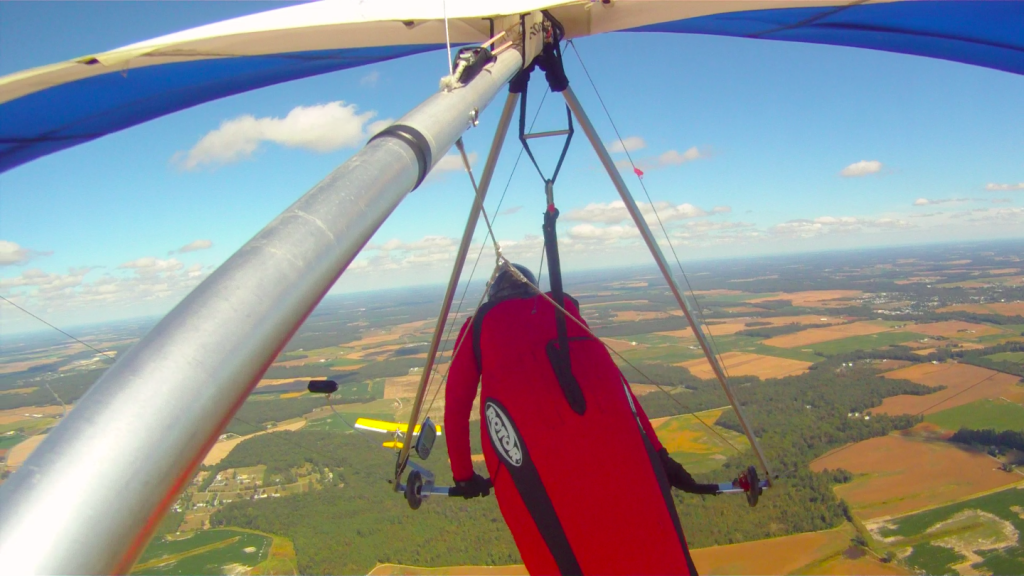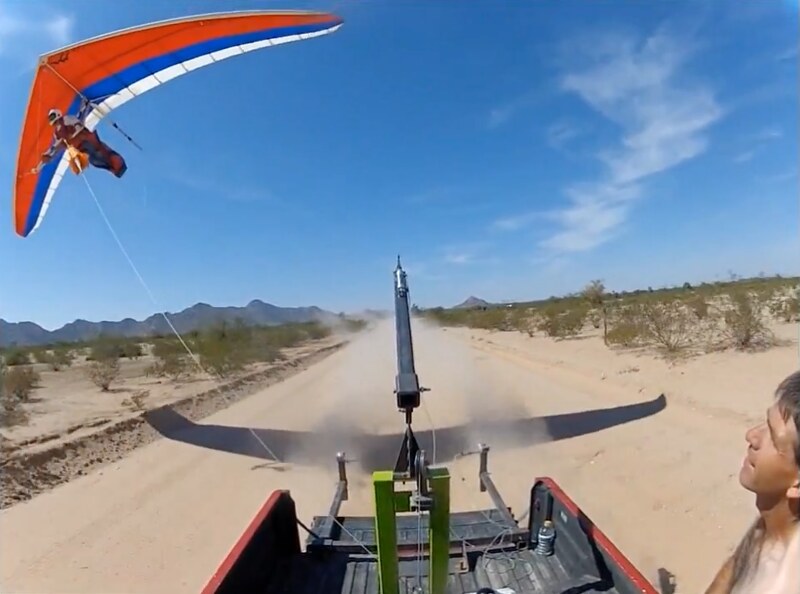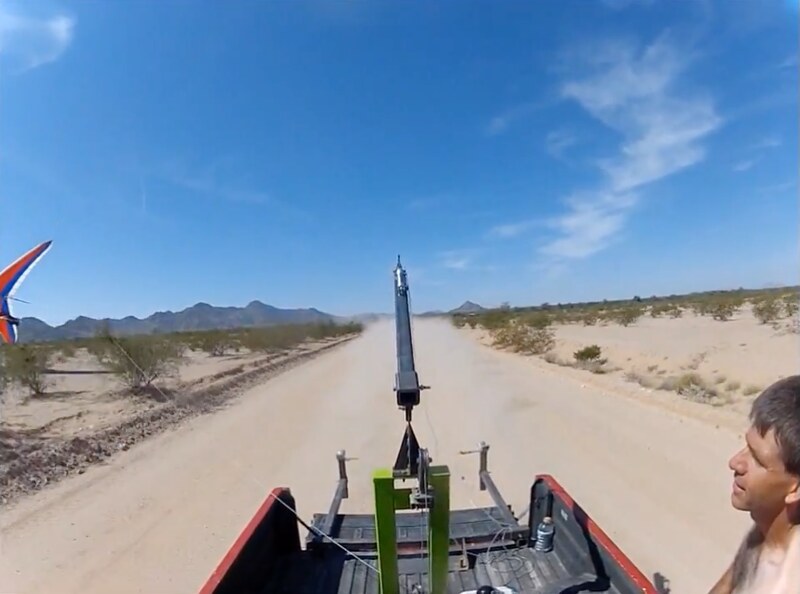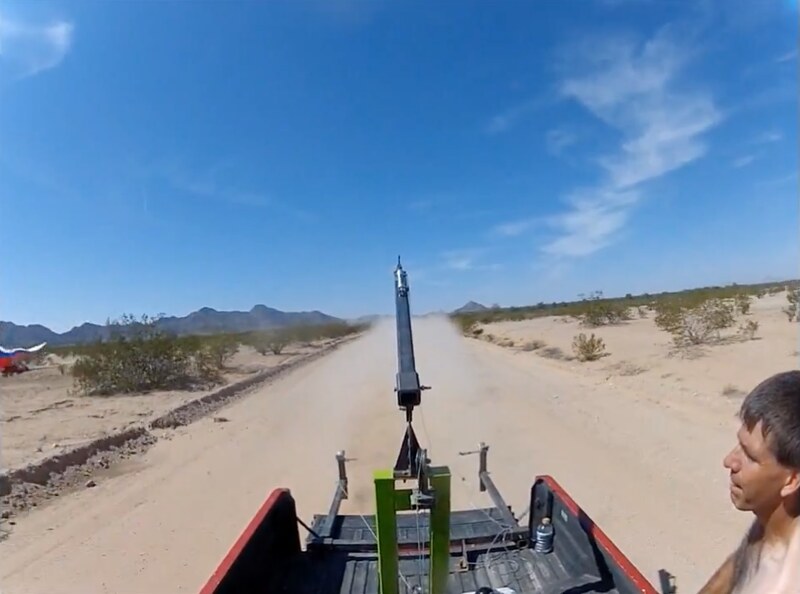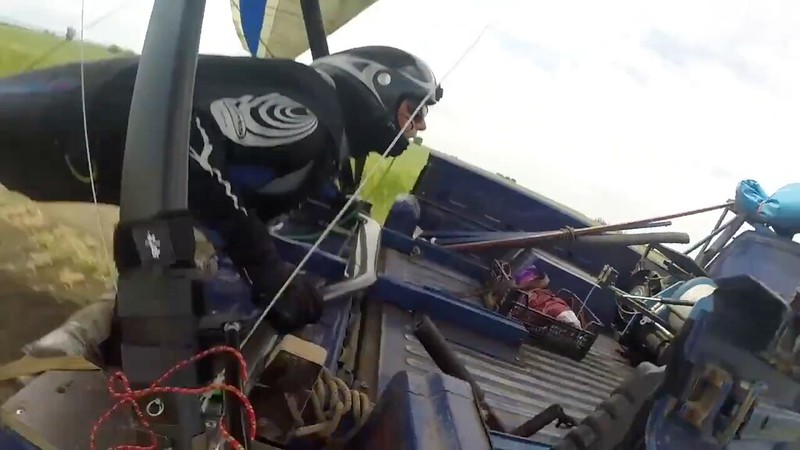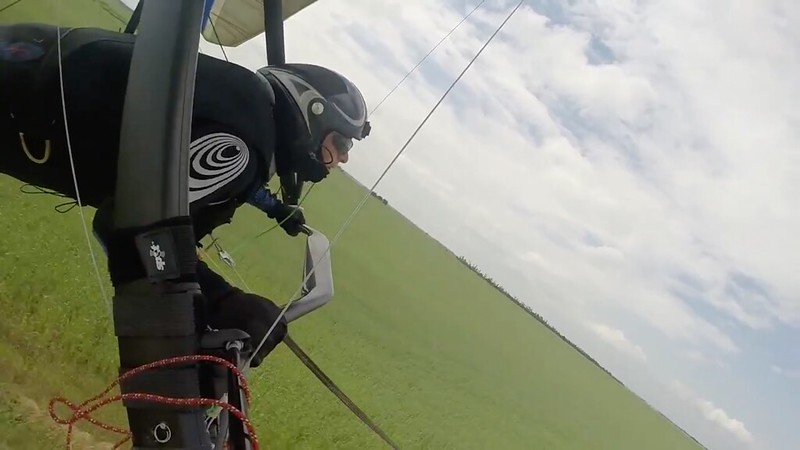http://airtribune-production.s3.amazonaws.com/media/contest/files/2019/07/GTxd6mT4AIn8.pdf
Really Davis? 'Cause a bit over eleven years prior you said:2019 Big Spring Nationals - 2019/07
Weaklinks of 140 and 200 pounds will be available and provided by the organizers. Weaklinks provided by the organizers must be used by the competitors.
http://ozreport.com/12.081
Weaklinks - the HGFA rules
But now you've gotta use either a 140 or a 200. Back then...Davis Straub - 2008/04/22 14:47:00 UTC
Here is the requirement from the 2007 Worlds local rules (which I wrote) for weaklinks:
Competitors must use appropriate aerotow bridles as determined by the Meet Director and Safety Director and their designated officials. Bridles must include secondary releases (as determined by the Safety Director). Bridles must be able to be connected to the tow line within two seconds. The only appropriate bridles can be found here:
http://OzReport.com/9.039#0
and:
http://ozreport.com/9.041#2.
Pilots who have not already had their bridles inspected during the practice days must bring their bridles to the mandatory pilot safety briefing and have them reviewed. Pilots with inappropriate bridles may purchase appropriate bridles from the meet organizer.
Weaklinks
Pilots must use weaklinks provided by the meet organizers and in a manner approved by the meet organizers. All weaklinks will be checked and use of inappropriate weaklinks will require the pilot to go to the end of the launch line to change the weaklink.
Weaklinks will consist of a single loop of Cortland 130 lb Greenspot braided Dacron Tolling line http://www.cortlandline.com/catalog/braid.html and should be placed at one end of a shoulder bridle. The tow forces on the weaklink will be roughly divided in half by this placement. Pilots will be shown how to tie the weaklink so that it more likely breaks at its rating breaking strength.
For many years a number of us (US pilots) have felt that #8 bricklayers nylon line was not an appropriate material to use for weaklinks as it is not as consistent in its breaking strength (as far as we are concerned) as the Greenspot line used in the US. At the 2008 Forbes Flatlands Greenspot for the first time was used as the standard weaklink material (thanks in large part to the efforts of Bobby Bailey). We applaud these efforts to improve the safety of aerotowing by using a better weaklink material.
If the weaklink is at one end of the bridle then there is little to no reason to replace the weaklink after each flight. The weaklink should be replaced if it shows any signs of wear as its strength may be reduced. The weaklink is constructed using "fisherman's knots."
A single loop of weaklink is used at the end of the V-bridle or the end of the pro tow bridle.
Pilots at the 2007 Worlds were not actually required to use the bridles pictures above unless their bridle couldn't be hooked up quickly to the carabineer at the end of the tow rope. They could have a weaklink (four strands) that connected their bridle to the carabineer. They just had to have the loops of the weaklink available to be hooked to by the ground crew. This would obviously require a carabineer at the end of the tow rope, and would leave the weaklink attached to the carabineer after the pilot releases, requiring that it be taken off by the ground crew before hooking up to the next pilot. Of course, a locking carabineer could be used.
It was required that pilots be able to be connected to the tow line quickly both in order to be fair to all pilots and get them in the air in time to compete with each other, as well as to promote safety. It is safer to have a simple uniform release/bridle system that the ground crew is familiar with and can determine if there is a problem. The simpler and more uniform the safer, system wide.
Getting pilots into the air quickly is also safer as it reduces the stress that pilots feel on the ground and keeps them focused on their job which is to launch safely and without hassling the ground crew or themselves. When we look at safety we have to look at the whole system, not just one component of that system. One pilot may feel that one component is unsafe from his point of view and desire a different approach, but accommodating one pilot can reduce the overall safety of the system.
I look forward to any response from the HGFA or other interested persons. Again, I have a direct personal and minor financial interest in the issues raised by this discussion, but no financial interest when it comes to weaklink material.
- If you used a 140 it would've been ruled inappropriate and you'd have been sent to the end of the line to swap it out for an acceptably safe one. And I imagine if you'd shown up with a 200 - which would've been a virtual death sentence for both you and your Pilot In Command back then - you'd have been immediately ejected from the event and banned for life from any and all future competitions.
- One asshole might have felt that that a loop of 130 was unsafe from his point of view and decided to go with a 200 approach. And accommodating that one total dickhead would've cut the overall safety of the system in half. Who knows how many innocent 130ers he might have taken out with him.
- We all played by the same rules...
http://ozreport.com/forum/viewtopic.php?t=31052
Poll on weaklinks
...or we didn't play. So aren't some of us now enjoying unfair advantages? Pretty safe bet they are and that the ones who are....Jim Rooney - 2013/03/04 19:31:36 UTC
We all play by the same rules, or we don't play.
http://ozreport.com/forum/viewtopic.php?t=30971
Zach Marzec
...are the ones using the more dangerous weak links.Jim Rooney - 2013/02/15 06:48:18 UTC
Davis has been at an around all this plenty long enough to understand what's what and who's who.
What qualifications do the Meet and Safety Directors and their designated officials have to evaluate appropriate aerotow bridles and determining whether or not it's the cheap easily reachable bent pin shit they sell and can force competitors to buy? Can I see the set of minimum standards to which appropriate aerotow bridles must comply? Anything beyond "easily stowed"? Is there a maximum number of competitors it's allowed to kill before it's disqualified from competitions and sold off to students at losses?Competitors must use appropriate aerotow bridles as determined by the Meet Director and Safety Director and their designated officials.
For how many years?For many years a number of us (US pilots) have felt that #8 bricklayers nylon line was not an appropriate material to use for weaklinks as it is not as consistent in its breaking strength (as far as we are concerned) as the Greenspot line used in the US.
What number of us (US pilots) have felt that #8 bricklayers nylon line:
- was not an appropriate material to use for weaklinks?
- was a totally excellent material to use for weaklinks?
- didn't give a rat's ass one way or another?
Did any of them base anything regarding the breaking strength consistency of single loop of Cortland 130 lb Greenspot braided Dacron Tolling line on anything beyond his feelings? (Just kidding.)
How come the Aussie pilots who'd been actually using the #8 bricklayers nylon line didn't feel that it was not an appropriate material to use for weaklinks as it was not as consistent in its breaking strength (as far as you were concerned) as the Greenspot line used in the US? 'Cause they're pretty much all total douchebags? So unlike a number of us (US pilots)?
How many Aussie pilots do you figure they needlessly killed over the course of those many years when a number of us (US pilots) were feeling that #8 bricklayers nylon line was not an appropriate material to use for weaklinks as it was not as consistent in its breaking strength (as far as you were concerned) as the Greenspot line used in the US?
So you motherfuckers haven't actually tested anything, have no fuckin' clues regarding actual breaking strengths, let alone consistency of actual breaking strengths, right...
http://ozreport.com/forum/viewtopic.php?t=15716
weak links
http://ozreport.com/forum/viewtopic.php?t=31052Davis Straub - 2009/04/19 19:32:23 UTC
Tree branch, spectra line, your body.
Poll on weaklinks
...Davis?Davis Straub - 2013/03/06 18:29:05 UTC
I'm thinking about doing a bit more testing as there seemed to be some disagreement around here about what the average breaking strength of a loop of Greenspot (or orange) weaklink was.
How very odd. 'Cause precisely nine months before you posted this - and several weeks before the 2007 Worlds at Big Spring - a number of us (US pilots)...For many years a number of us (US pilots) have felt that #8 bricklayers nylon line was not an appropriate material to use for weaklinks as it is not as consistent in its breaking strength (as far as we are concerned) as the Greenspot line used in the US. At the 2008 Forbes Flatlands Greenspot for the first time was used as the standard weaklink material (thanks in large part to the efforts of Bobby Bailey). We applaud these efforts to improve the safety of aerotowing by using a better weaklink material.
http://www.chgpa.org/forums/viewtopic.php?f=2&t=2467
weak links
...a million of us US comp pilots to be precise and specific - felt that the single loop of Cortland 130 lb Greenspot braided Dacron Tolling line you mandated for the 2007 Worlds was half as consistent as it needed to be. And Jim Keen-Intellect Rooney, of whom you are one of his countless...Jim Rooney - 2007/07/22 22:30:28 UTC
I've heard it a million times before from comp pilots insisting on towing with even doubled up weaklinks (some want no weaklink). I tell them the same thing I'm telling you... suck it up. You're not the only one on the line. I didn't ask to be a test pilot. I can live with your inconvenience.
http://ozreport.com/forum/viewtopic.php?t=24846
Is this a joke ?
...great friends (although you might not have known this), had to tell them all to suck it up with respect to this standard weaklink material we have (thanks in large part to the efforts of Bobby Bailey) and all applaud with respect to the efforts to improve the safety of aerotowing. (Really astonishing the way Jim Keen-Intellect Rooney's able to maintain so many great friends in the sport with his approach to relationships.)Jim Rooney - 2011/08/28 06:15:12 UTC
You may not know, but Davis is a friend of mine.
So since when did consistency in hang glider weak link breaking strength start becoming a GOOD thing? Rohan Holtkamp says:
http://ozreport.com/9.032
The Worlds - weaklinks
For us Yanks who talk and think in pounds that's:Rohan Holtkamp - 2005/02/07
Robin's own release failed to release, plus he refused our weaklink, even to the point of yelling and physical threat. After viewing video evidence of the entire flight, even a 80kg weaklink would have made little difference. His actual weaklink did test to be stronger than 180kg, but that was not the primary cause of his accident. Release failure was, same as Mike Nooy's accident. A full lockout can be propagated with less than forty kg of tension. Read "Taming the beast" on our website and/or come have a look at the video if you doubt this in any way.
180 - minimum legal for a 225 pound max loaded glider (which I doubt actually exists in the real world)
400 - the top appropriate weak link you're mandating now
090 - good freakin' luck getting anything airborne
Dr. Trisa Tilletti says:
Normal climb in smooth air behind a 914 minus turbo is 125 pounds, 35 pounds more than you need for a lockout, and turbulence can jerk your tension up to whatever. So to meet your expectation of performance for weak links on hang gliders there at Cloud 9 you want the weak link to break as early as possible in lockout situations at 90 pounds or under and hold at a minimum of 400 pounds to avoid frequent breaks from turbulence. And the only way you can achieve that is by using a weak link that breaks with a level of inconsistency beyond all imagination. The inconsistency of #8 bricklayers nylon line in its breaking strength (as far as we are concerned) doesn't come within a mile of beginning to scratch the surface. (See how much fun arithmetic can be when you start plugging in actual numbers, people of varying ages?)Dr. Trisa Tilletti - 2012/06
Actually, that is our expectation of performance for weak links on hang gliders here at Cloud 9, too. Primarily, we want the weak link to fail as needed to protect the equipment, and not fail inadvertently or inconsistently. We want our weak links to break as early as possible in lockout situations, but be strong and reliable enough to avoid frequent weak link breaks from turbulence. It is the same expectation of performance that we have for the weak links we use for towing sailplanes.
Totally backwards, Davis. Gotta show them how to tie the weaklink so that it LESS likely breaks at its rating breaking strength. I can't stress enough how important it is to get these things breaking at pressures all over the fuckin' map. Randomness is our only ghost of a chance for long term survival. At an absolute minimum you need them breaking inconsistently at 140 and 200 pounds to help level the playing field.Pilots will be shown how to tie the weaklink so that it more likely breaks at its rating breaking strength.
You're on the right track there, Davis. That'll help a little bit with inconsistency.If the weaklink is at one end of the bridle then there is little to no reason to replace the weaklink after each flight.
I think your best bet is to start out with some thousand pound bricklayer's twine then grind it into a sharp rock with your foot the way you do when you're load testing your sidewires, work harden it a fair bit, bake it in the sun for a couple weeks. Get it so's its breaking strength is totally unpredictable.The weaklink should be replaced if it shows any signs of wear as its strength may be reduced.
If Jeff Bohl had been flying with his extremely consistent 200 pound Tad-O-Link "constructed" with something way less consistent than a "fisherman's knot" he'd have almost certainly come away smelling like a rose.The weaklink is constructed using "fisherman's knots."
At ONE end of a shoulder bridle?Weaklinks will consist of a single loop of Cortland 130 lb Greenspot braided Dacron Tolling line http://www.cortlandline.com/catalog/braid.html and should be placed at one end of a shoulder bridle.
http://www.hanggliding.org/viewtopic.php?t=11519
Aerotowing methods
Ryan Voight - 2009/04/13 23:27:29 UTC
But don't forget the weaklinks- one on each side!!!
Twice as many bridle ends, twice as much inconsistency. Ya just never know when an inadvertent weaklink break is gonna critically increase the safety of the towing operation. At the very worst it would be an inconvenience. And nobody ever got a skinned knee...Dallas Willis - 2009/04/14 00:08:15 UTC
Ryan are you serious?!?!
One weaklink on the side you don't normally release from is all you need (less wear and tear on the weaklink). 2 weaklinks = 2 chances for a weaklink to inadvertently break which is bad.
http://ozreport.com/forum/viewtopic.php?t=31052
Poll on weaklinks
...from an inconvenience now and then - just an extra dose of happiness.Davis Straub - 2013/03/06 18:29:05 UTC
I'm happy to have a relatively weak weaklink, and have never had a serious problem with the Greenspot 130, just an inconvenience now and then.
http://www.hanggliding.org/viewtopic.php?t=27393
Pro towing: 1 barrel release + weak link or 2 barrel release
You just gotta marvel at the inconsistency level of this:Juan Saa - 2012/10/18 01:19:49 UTC
The normal braking force in pounds for a weak link is around 180, at least that is the regular weak link line used at most aerotow operations. By adding a second weak link to your bridal you are cutting the load on each link by half, meaning that the weak link will not break at the intended 180 pounds but it will need about 360.
If that is what you use and is what your instructor approved then I have no business on interfering, i dont know if you are using the same weak link material but there shoul be only ONE weak link on a tow bridle for it to be effective in breaking before higher loads are put into you and the glider should the glider gets to an attitude or off track so much that the safety fuse of the link is needed to break you free from the tug.
I made the same mistake on putting two weak links thinking that I was adding protection to my setup and I was corrected by two instructors on separate occacions at Quest Air and at the Florida RIdge.

Rube Goldberg contraption.
- Three easily reachable releases at two easily reachable locations, two bent pin jobs which don't pretend to be accessible in an emergency, one Linknife which does pretend to be accessible in an emergency.
- Two extremely consistent single loops of Cortland 130 lb Greenspot braided Dacron Tolling line which break at whatever loading your instructor has approved them to and violate the competition rules (which you wrote) that state:
(Really gotta admire the depth of inconsistency you've engineered into this post. (It would taken me years to pull off something like this. Hell, it's taken me well over a decade just to start fully appreciating just how mind bogglingly convoluted you've made it.))Weaklinks will consist of a single loop of Cortland 130 lb Greenspot braided Dacron Tolling line http://www.cortlandline.com/catalog/braid.html and should be placed at one end of a shoulder bridle.
- A thin pro toad bridle ten times longer than it should be with bulgy eye splices at both ends such that it's optimized to clear the tow ring inconsistently.
And...
Now you're letting people choose between 140 and 200. I'll bet that #8 bricklayers nylon line is a lot more consistent in its breaking strength (as far as we are concerned) than the 140/200 free-for-all you're doing now. And I'll bet that a single loop of Cortland 130 lb Greenspot braided Dacron Tolling line breaks a lot more consistently at its breaking strength than a single loop of the 140 breaks at the single loop of Cortland 130 lb Greenspot braided Dacron Tolling line's breaking strength.
http://ozreport.com/forum/viewtopic.php?t=24846
Is this a joke ?
Looks like you finally figured out why we had so many breaks so quickly. They weren't strong enough I'm guessing? Or was there some other reason you dialed up the minimum 7.7 percent? Are you having fewer coincidences now?Davis Straub - 2011/08/28 15:26:28 UTC
Then again, Russell Brown had us double up behind him after six breaks in a row at Zapata. We couldn't figure out why we had so many breaks so quickly. Maybe just coincidence.
But aren't six breaks in a row very quickly at Zapata pretty much indisputable, case closed, end of story proof of the single loop of Cortland 130 lb Greenspot braided Dacron Tolling line as the Holy Grail of the consistency that a number of us (US pilots) so fervently desired to achieve optimal weak link performance?
P.S. Have you considered using fewer tugs? That would probably also help prevent having so many breaks so quickly. Maybe also using...
http://www.chgpa.org/forums/viewtopic.php?f=2&t=3661
Flying the 914 Dragonfly
...safer tugs. Hell, go nuts - all 582s and fewer of them.Jim Rooney - 2008/12/06 20:01:49 UTC
You will only ever need full throttle for the first fifty feet of a tandem tow. Don't ever pull a solo at full throttle... they will not be able to climb with you. You can tow them at 28 mph and you'll still leave them in the dust... they just won't be able to climb with you... weaklinks will go left and right.
http://ozreport.com/forum/viewtopic.php?t=24846
Is this a joke ?
Different colors, different glider models and weights, single and double loops at the whims of the pilots, gotta tell Russell Brown (tug pilot, tug owner, Quest Air owner) what you're doing but not any of the other tug pilots. Massive weak link inconsistency.Davis Straub - 2011/08/26 14:04:52 UTC
Greenspot is now black.
We had six weaklink breaks in a row at Zapata this year. Russell Brown (tug pilot, tug owner, Quest Air owner) said go ahead and double up (four strands of Cortland Greenspot). He knows I used his Zapata weaklink in Big Spring (pilots were asked to tell the tug pilot if they were doing that).
So now you can pick 140 or 200 - regardless of your max certified operating weight, flying weight, glider model, muppet or rockstar status, 914 or 582 tug. A suicidal little Niki girl glider can go up at 2.0 Gs and 350 pound guy glider can go up at 0.8. And a 375 pounder can use the ultra-safe 140 and violate the FAA minimum weak link regs.
140 because experience has shown that you can get an unacceptably high rate of inconveniences and coincidences if you go any safer and 200 'cause any more dangerous and you kill too many gliders and tugs. So why not go for the sweet spot? 175 - dead center, best of all worlds. You're not even ALLOWED to fly 175 - even if you bring your own.
Another way of saying that the top one will be totally useless in any emergency situation. Yeah...
http://www.chgpa.org/forums/viewtopic.php?f=2&t=3391
More on Zapata and weak link
http://c2.staticflickr.com/8/7077/27082298482_cda1aba01b_o.pngPaul Tjaden - 2008/07/22 04:32:22 UTC
I got clobbered and rolled hard right in a split second. I have never had a lockout situation happen so quickly and dramatically and had no chance to release as I have always thought I could do.
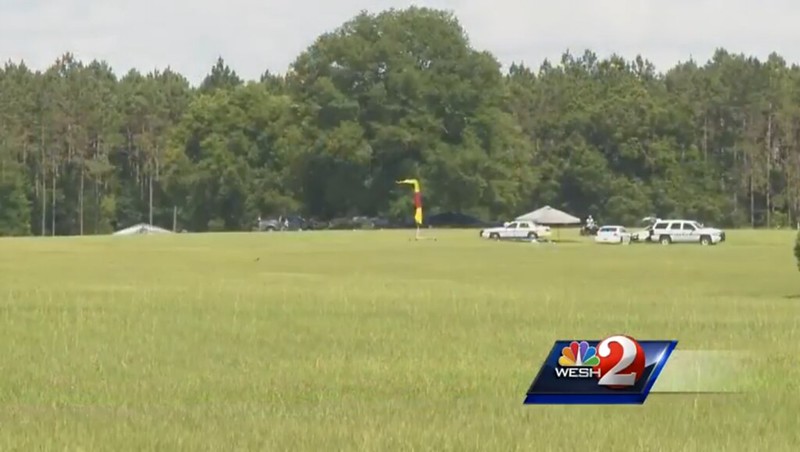
Big fuckin' surprise.
So has anyone ever actually USED an:

at one of your comps? I've never seen one in a video of a comp or a video of anything else, never heard of anyone actually using one - let alone being saved by one in an emergency. And strangely there was zero discussion of them in the wake of the 2016/05/21 Jeff Bohl.
Are we still applauding these efforts now that we're requiring a min of 140 and allowing a max of 200? Did we needlessly kill anyone on the 130 when it increased the safety of the towing operation by overriding the decisions of the two humans involved to continue the tow...At the 2008 Forbes Flatlands Greenspot for the first time was used as the standard weaklink material (thanks in large part to the efforts of Bobby Bailey). We applaud these efforts to improve the safety of aerotowing by using a better weaklink material.
http://4.bp.blogspot.com/-bRrpHNa68iY/UQ6Pv9gRZyI/AAAAAAAAjTg/Hc22bx5122Q/s2048/20943781_BG1.jpg

...who would’ve probably been OK if he'd been...
http://ozreport.com/forum/viewtopic.php?t=31052
Poll on weaklinks
http://www.hanggliding.org/viewtopic.php?t=31747Jim Rooney - 2013/03/04 19:31:36 UTC
Morningside decided that they were happy with 200lb weaklink.
Lockout
...happy with the two hundred that...Davis Straub - 2014/09/01 15:22:41 UTC
I can tell you that I fly with a 200lb weaklink on one side of my 750lb pro tow bridle. I am happy with it.
http://www.hanggliding.org/viewtopic.php?t=31717
Weak link?
...many of us now are?Davis Straub - 2014/08/20 19:48:26 UTC
Many of us are now using 200 lb test line from Cortland.
Are the "many of us" who or now using 200 lb test line from Cortland the same "many of us" (US pilots) who formerly\ felt that #8 bricklayers nylon line was not an appropriate material to use for weaklinks as it was not as consistent in its breaking strength (as far as they were concerned) as the Greenspot line used in the US? Or did you redefine the qualifications for the "many of us" who are empowered to determine what "all of us" will be permitted to fly / prevented from flying with on our gliders - irrespective of u$hPa SOPs and FAA regs?
It's great that we applaud these tremendous efforts by Bobby and the rest of you assholes to improve the safety of aerotowing by using a precision fishing line that blows six times in a row in light morning conditions, dumps little girl gliders on takeoffs and half kills them, blows on comp pilots six times in a row in light morning conditions, dumps pro toad tandem aerotow instructors in monster thermals and fatally tumbles them, is currently outlawed in US comps for being excessively safe and inconvenient...
If I'd known I could've gotten all applause by that route I wouldn't have wasted all those thousands of hours developing bulletproof, clean, efficient, high powered AT release, bridle, weak link systems - stuff that holds or blows inconsistency between zero and six hundred pounds towline on the decision of the PILOT who maintains continuous control as the PILOT - for the thanks of getting pissed all over by untold scores of stupid scummy Davis, Jack, Greblo, Bob Show dregs.


